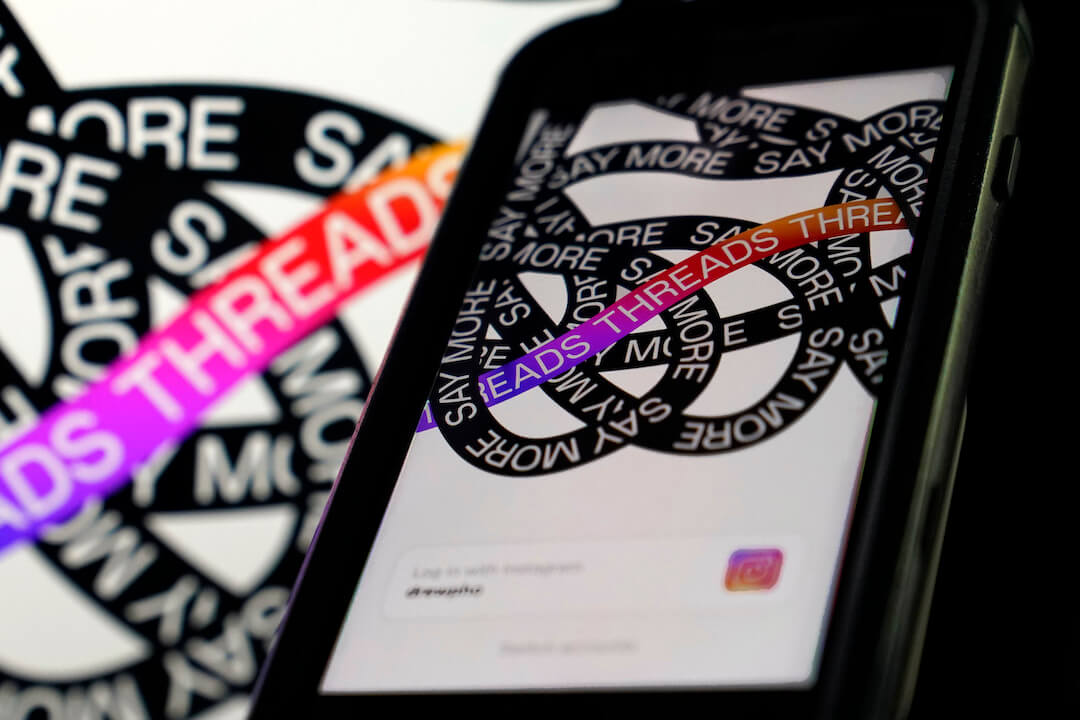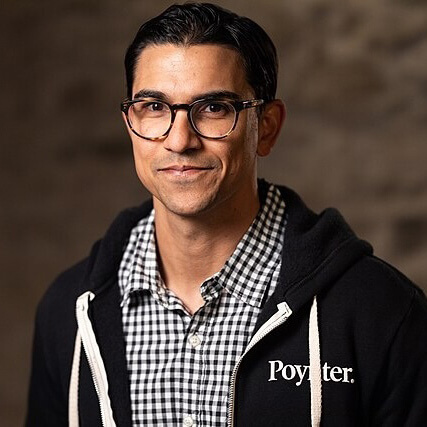In the hours after Elon Musk’s purchase of Twitter in October 2022, scores of users declared the social network over and fled to Mastodon.
Musk’s coziness with misinformation, uneven application of free speech absolutism and massive rounds of layoffs left the site increasingly too dubious, too toxic, and too broken for many users.
More than half a year later, Mastodon and several other would-be usurpers — most notably Post.News and Bluesky — boast just a fraction of Twitter’s traffic and almost none of the cultural clout.
But a series of technical missteps and the launch of a new competitor from Meta seem to finally be threatening Twitter’s place as the short-text pulse of the internet.
We asked journalists — who are often cited with politicians, comedians and celebrities as early Twitter adopters and a major source of its rise — what they think about the new Instagram Threads and if Twitter could really be over this time. Their responses have been edited for length and clarity.
Brandy Zadrozny, NBC News senior reporter:
It’s buggy and so far it feels to me like the algorithm seems poised to replicate the Instagram experience — which is not what people go to Twitter for. Having said that, it’ll probably be a success — Meta already had the users and Twitter gave them the blueprint.
But. Twitter was special in part because of the communities it created around interests and events and the ability to search out and find reliable information during real-time events, emergencies and breaking news. I don’t see Threads doing this yet.
I can say unequivocally that Threads isn’t going to kill Twitter. Elon Musk did that.
Sara Fischer, Axios senior media reporter:
I wrote about all of the copycat features and apps launched by Meta that have failed, mostly due to lack of user adoption. Most of those apps had users in the hundreds of thousands range. Already, more than 10 million people have joined Threads, per Meta CEO Mark Zuckerberg. This means that Threads is likely moving in the direction of successful apps that Instagram has created and integrated, like Boomerang and Layout.
In your opinion, is it a threat to Twitter?
Yes — not because the advertising dollars will move over immediately, but because it will eventually put a dent in Twitter’s engagement. Once the flywheel begins, and prominent voices start to break news on Threads, it will be harder for Twitter to chase that momentum. They won’t introduce ads to Threads until it reaches much larger adoption.
Jon Schleuss, NewsGuild-CWA president:
I’m excited to see more competition as Twitter has been imploding for about a year now. However, I worry about journalists using a platform by a company that has signaled hostility towards journalists with its threats to remove news from its platforms if certain legislation passes. Journalists produce valuable labor and should be compensated for it. We have to be smart about what we put on platforms by huge companies that do not share our values.
Could it be a Twitter killer?
I think it has the best odds of any platform so far. If they can figure out verification — and not charge people who add value to their platform — I think it could very well be a safer and more trusted spot for journalists.
Rajneil Kamath, publisher of Newschecker (an Indian fact-checker):
Seems like a more stable version of Twitter with a lot of promise. Zuck has always succeeded in borrowed ideas. We are waiting to see how it pans out over time. There is a lot of initial momentum, reminding me of the good old early days of Twitter.
Eric Deggans, NPR television critic
The idea of allowing people to transfer their connections over from Instagram was ingenious. Because the biggest challenge for new social media platforms is developing a community large enough that people want to participate and feel their participation has a tangible result. As much as critics complained about Elon Musk’s transformation of Twitter, it has remained a place where lots of connections are made and communities continue to converse. Within hours of its inception, there are conversations happening on Threads, because people are importing their connections from another, long-standing social media platform.
Right now, it feels a lot like walking into a huge party where you know many of the people, but you have to move around a bit to connect with them in this new place and start having conversations. If there is a sense that those conversations will resonate across a wide range of people with an impact outside the service, then I think Meta will have created a formidable platform.
In your opinion, is it a threat to Twitter?
Absolutely. In part, because many of the users flocking to Threads are desperate for a social media platform that has fewer trolls, seems more stable, can be trusted to handle their content fairly and isn’t actively seeking to promote views they find objectionable. Right now, aside from users who like Elon Musk or agree with his support of right-wing ideology, many Twitter users feel forced into participating on a platform that still has tremendous reach, but isn’t in sync with their own personal values. Others are disappointed by Twitter’s technical issues, amid concerns about a rise in trolling and suspicions that all posts are not treated equally. There’s also lots of concern about the way some changes are implemented unilaterally and with little warning. And there is also resentment at how more elements of the site are being tied to paid subscriptions.
The open question is whether Threads can approach the functionality and reach of Twitter without repeating some of the actions which have frustrated and angered longtime users of Musk’s service. If Meta and Mark Zuckerberg can reproduce the advantages of Twitter without some of the major problems voiced by critics, they absolutely could challenge Twitter in a way other competing platforms have not managed.
Taylor Seely, Phoenix City Hall reporter with The Arizona Republic:
I’m excited for the new platform. It feels a little bit like being back in middle school when you and your friends get social media accounts for the first time, and you’re exploring the space and trying fervently to find your friends. There’s a spark of enthusiasm that I think is palpable. There needs to be a followers-only feed, though.
My hope is Instagram users who didn’t engage much with Twitter will join Threads, and I can sort of blend the audiences of political insiders from Twitter with everyday Arizonans who want to know what’s going on in their neighborhoods from Instagram. I might adopt a more explainer-style, news-you-can-use tone. I want the information to be accessible and easy to understand. That’s truly what I’m most excited for — engaging with new locals.
I think it will weaken but not kill Twitter. I joined Threads because I wanted better integration between Twitter and Instagram and now Threads offers that. But I think for many others the motivation is either ideological or because they see Twitter’s user experience declining. If Twitter continues hindering the user experience, either by aggressively pushing subscriptions or capping the amount of tweets you can see, I think Threads could prevail as the dominant platform.
But my pessimistic hypothesis — and I hope this doesn’t happen — is that people will begin to see Twitter vs. Threads as a statement about their political identity. And to the extent that politically right-leaning individuals are more drawn to Twitter and see it as a place more amenable to their worldviews, I don’t see that platform dying. The struggle for Twitter, I think, is that Instagram doesn’t feel partisan. So I think Threads is well-situated to capture a broad, politically well-rounded audience. For now, I’m staying on both platforms. But realistically, it would be a lot easier to just be on one.
Justin Baragona, media reporter at The Daily Beast
First impressions?
Hard to say. Seems simultaneously chaotic and boring, if that even makes sense. Your feed is basically just whoever you follow and what they post, but also the major brands that Threads wants to highlight, I guess? Therefore, most of the stuff I see is just corporate branding and whatever influencers think will get the most engagement.
Do you plan to be active on it?
Who knows. Maybe? Guess it all depends on what the next few days bring. Feels like we’ve been down this road many times before with other Twitter clones.
I think the biggest threat to Twitter right now is Twitter itself, and whether it can even remain operational. That said, Threads is already tied to a major social media platform and has the financing and infrastructure in place that other wannabe rivals have lacked. In my opinion, it all depends on how bad Twitter really gets — in usability and content — and if users warm up to this latest thing.
Adriana Lacy, journalist and audience engagement consultant
I haven’t seen this amount of publishers jump to a platform this quickly and this early. I know a few publishers experimented with Post and Mastodon but there really wasn’t a large influx there. This is really one publishers are seeing a lot of value in.
Every client I’ve worked with has asked me to make a Threads account for them, which I’ve done. I really plan to use it a lot like Twitter, but I think I might lean into visuals a bit more. Something that struck me is how great the video and image quality is, which I think has a lot to do with a lot of it being kind of brought in from Instagram, and I think there’s really a lot of opportunities to kind of elevate storytelling with some really strong visuals on that platform. And more character count is great for sharing stories and things and having the link not count as character text, which I think is something that publishers will really like.
I don’t like to predict the future, but I’m feeling pretty good about this one. I think people were all getting really frustrated with Twitter. Their decisions to cut off third-party data sources and the rate limits to see tweets or things that people really are not happy with. And I think that being able to pivot to a platform where you don’t have to start from nothing to build your following is something that I think people really appreciate.
I think something in particular for news organizations is this idea that Instagram’s primary user base is kind of that 18 to 34, a bit more youthful crowd, was a big reason why publishers were on Instagram in the first place. If you can really start to see that audience transfer to Threads and start serving them not just really nice images with text, but also links that they can read, you can really possibly in a few months or years start to see younger audiences really more engaged with news.
Sia Nyorkor, anchor and reporter for WOIO-TV, a CBS News affiliate in Cleveland, Ohio:
So far, I like Threads! I utilized the import followers from Instagram feature which made it easier to connect with the people I’m interested in communicating with. I also look forward to connecting with new folks! I plan to use Threads like I use other social media: a mix of personal and business. It’s a great way to stay connected to the community and engage viewers. Some of my best stories come from talking with folks online.
As cliché as it sounds, only time will tell if Threads will be a “Twitter killer.” I can tell you that people are exhausted from all the back and forth and random changes the last few months. Users want consistency in their communications and if Threads provides that, it could be bad news for Twitter.
Matt Pearce, internet culture reporter at the Los Angeles Times and president of the Media Guild of the West
It seems pretty corporate, and it’s a funny word to use because, in a way, all these apps are sort of corporate. But I showed up, and there’s already a somewhat polished user interface. There’s a lot of celebrities and brands on there already, and I think part of that’s because it’s downstream from Instagram, which is like the celebrity, clout-chaser platform. And so I think that seems to be in Threads’ DNA.
I would argue that Twitter as we knew it will not have a true replacement. Twitter may have been a historical aberration in the sense that it was the place where a critical mass of journalists and politicians and celebrities and scientists and other influential people were all gathered in the same place and were able to talk to each other and have actual interactions. You could also discover new people really easily there, which is one of the things that made it so exciting for a long time — on top of the fact that it was just really great for breaking news, and it’s really great for sports.
It really was useful for movement organizing, like during the Arab Spring in 2011, Ferguson in 2014, a lot of Trump-era social movements. There were a lot of things about it that sort of culminated and put everybody in the right place at the right time. But that was in the first decade or two of social media’s existence, and I think now we’re entering a phase where there seem to be a lot of options. And a lot of the options don’t seem to be that good.
Do I think Mark Zuckerberg can crush Elon Musk? Yes. But do I think that Threads will replace Twitter? No, because I don’t think anything will replace the Twitter of 2011 through 2020.
Will Media Guild of the West or its units, such as the Los Angeles Times Guild, join Threads?
I don’t have any plans to spend a bunch of time trying to build up our union’s social media presence because I think social media’s power for a union is actually quite limited at times. There’s a very definite ceiling to it.
Social media is very useful for rabble-rousing people, hammering away at a message that you’re trying to organize around or educating people who are in your space. But at the end of the day, for labor organizing, social media is never going to be more important than a strike or work stoppage. Alden Global Capital doesn’t care what you tweet about them and neither do a lot of the companies that own newsrooms these days.
And given that there is now so much union density inside of journalism, now that there’s so much heavy-duty organizing infrastructure, you actually don’t quite need social media as much to accomplish stuff as a union now, compared to maybe five years ago. Now, a lot of newsrooms have unions. You don’t really need to tweet about your union drive for people to understand the basics of what’s going on. Part of that’s just a measure of the growth of unions in journalism.
I’d love to talk to you about the California Journalism Preservation Act and the fact that the premise of that bill is that news publishers think that Meta and Google have been unfairly dominating the digital advertising market. Meta, in response to this legislation, which wants to make these companies pay these publishers for scraping and featuring our journalism, has threatened to ban journalism from its services in California if this bill passes.
I view that as an indictment of our current arrangement where journalism has shackled itself to two massive tech platforms that don’t really seem to care if we’re on there or not. The first time somebody tries to hold them accountable, they want to ban journalism from their services. That’s not really a healthy relationship for journalists.
David Cohn, senior director of Advance Digital’s Alpha Group
The rivalry between Zuckerberg and Musk hasn’t become blood sport (yet) but Threads leans into something that Meta is famous for: ripping off rival products and leveraging pre-built network effects to muscle its own success into existence. Combine this with Twitter’s various headwinds and Threads has a jiu-jitsu fighter’s chance of dealing a real blow to Twitter.
That said, whenever an app launches with a big fanfare and is declared an “X Killer,” that’s a red flag. I don’t see Threads as a Quibi repeat and I do see us entering a world where audiences are split among various social networks. As a product, Threads is a bit cumbersome, but I also try to give leeway for launches.
Personally, I enjoy having my Twitter separate from my Instagram and I semi-resent the idea that where I’ve sent pictures of my kids could be tied to the kind of network I’ve built on Twitter, which has been more professional.
For publishers, I think you do need to play in a space with a company like Meta backing it. But it’s another reminder that your ultimate goal as a creator is to get first-party data so you can create a direct relationship with the audience that isn’t mediated by any of the multibillionaire MMA tech funders/fighters out there.











